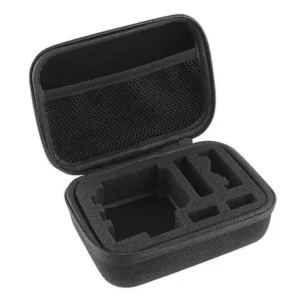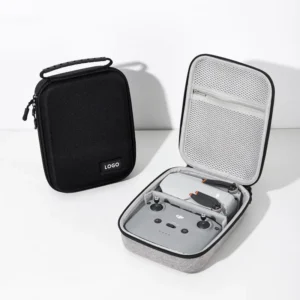What Are the Common Fabric Logo Printing Techniques?
In today’s digital era, the logo has become the core of brand visual identity. A well-designed logo significantly improves brand recognition and recall. Research shows that a strong logo design can increase recognition rates by up to 78% . To ensure that a logo appears crisp and vibrant on different materials such as bags, packaging, apparel, and non-woven fabric totes, choosing the right printing technique is essential.
Below, we explore the most common fabric logo printing methods used across industries and their advantages, limitations, and best applications.
1. Screen Printing
Screen printing is one of the oldest and most widely used techniques. The process involves using a stencil (screen) to transfer ink onto fabric by pressing it through a mesh with a squeegee. Screen printing delivers thick, vibrant layers of ink that create durable and high-impact logos .
Advantages: Suitable for a wide range of fabrics and surfaces, produces vivid colors, excellent durability.
Limitations: Requires separate screens for each color; higher setup costs for multicolor designs.
Applications: T-shirts, backpacks, promotional tote bags, and outdoor advertising banners.
2. Digital Printing
Digital printing (also known as direct-to-garment or DTG) works similarly to an inkjet printer, using CMYK color mixing to reproduce designs directly onto fabric . It is ideal for highly detailed or multicolor designs.
Advantages: High precision, no need for screens, perfect for small batches and complex designs.
Limitations: Higher unit cost than screen printing; not as effective on dark or synthetic fabrics.
Applications: Fashion items, custom cosmetic bags, limited-edition packaging, and promotional products.
3. Heat Transfer Printing
Heat transfer involves printing the design onto transfer paper or film and then applying heat and pressure to transfer it onto fabric .
Advantages: Produces photo-quality, high-resolution logos, ideal for complex, full-color images.
Limitations: Higher costs; prints can feel stiff; durability depends on washing care.
Applications: Sports bags, promotional cases, travel pouches, and small accessory packaging.
4. Hot Foil Stamping (Gold/Silver Foil)
Hot foil stamping uses heat and pressure to transfer metallic foil (gold, silver, or holographic) onto fabric .
Advantages: Creates a premium metallic finish; adds luxury appeal.
Limitations: Higher material costs; requires protective coating for durability.
Applications: Luxury handbags, premium cosmetic cases, branded packaging boxes.
5. UV Printing
UV printing uses ultraviolet light to cure specially formulated inks instantly . It allows printing on both flexible and rigid materials.
Advantages: Fast curing, sharp images, vibrant colors, eco-friendly (no solvents).
Limitations: Best suited for flat or slightly curved surfaces.
Applications: Rigid EVA cases, electronic packaging, retail display bags.
6. Embossing & Debossing
Embossing creates raised designs, while debossing creates recessed impressions on fabric .
Advantages: Adds texture, elegance, and tactile branding without inks.
Limitations: Limited color options, best combined with foil stamping for impact.
Applications: Leather laptop sleeves, premium wallets, custom watch cases.
7. Lamination (Film Coating)
Lamination applies a transparent protective film (glossy or matte) over printed designs .
Advantages: Improves durability, water resistance, and color brightness.
Limitations: Environmental concerns due to plastic film; less recyclable.
Applications: Reusable shopping bags, cosmetic packaging pouches, medical supply cases.
8. Gravure Printing
Gravure printing involves printing the design onto a plastic film and then laminating it onto fabric .
Advantages: Produces intense colors, high abrasion resistance, and waterproof surfaces.
Limitations: Uses plastic films that are difficult to recycle.
Applications: Non-woven shopping bags, promotional packaging, industrial fabric cases.
9. Water-Based Printing
Water-based printing (also called fabric “print painting”) uses water-based inks that are eco-friendly and washable .
Advantages: Strong color fastness, eco-friendly, soft hand-feel.
Limitations: Less vibrant on dark fabrics.
Applications: Eco tote bags, apparel, fabric promotional cases.
Conclusion
As consumer expectations evolve, logo printing on bags, packaging, and cases has shifted towards personalization, eco-friendliness, and multi-technique integration. From traditional screen printing to advanced digital and UV processes, each method offers unique benefits.
For B2B buyers—such as OEM/ODM bag manufacturers, cosmetic packaging suppliers, electronics brands, and promotional product wholesalers—choosing the right fabric logo printing method is key to ensuring durability, aesthetics, and strong brand identity.
A well-executed logo not only communicates product quality but also builds consumer trust and brand loyalty. Just like iconic examples—McDonald’s golden arches or Coca-Cola’s script logo—a clear, durable, and impactful logo on your packaging or case can set your products apart in competitive markets.





